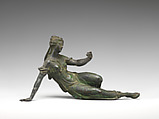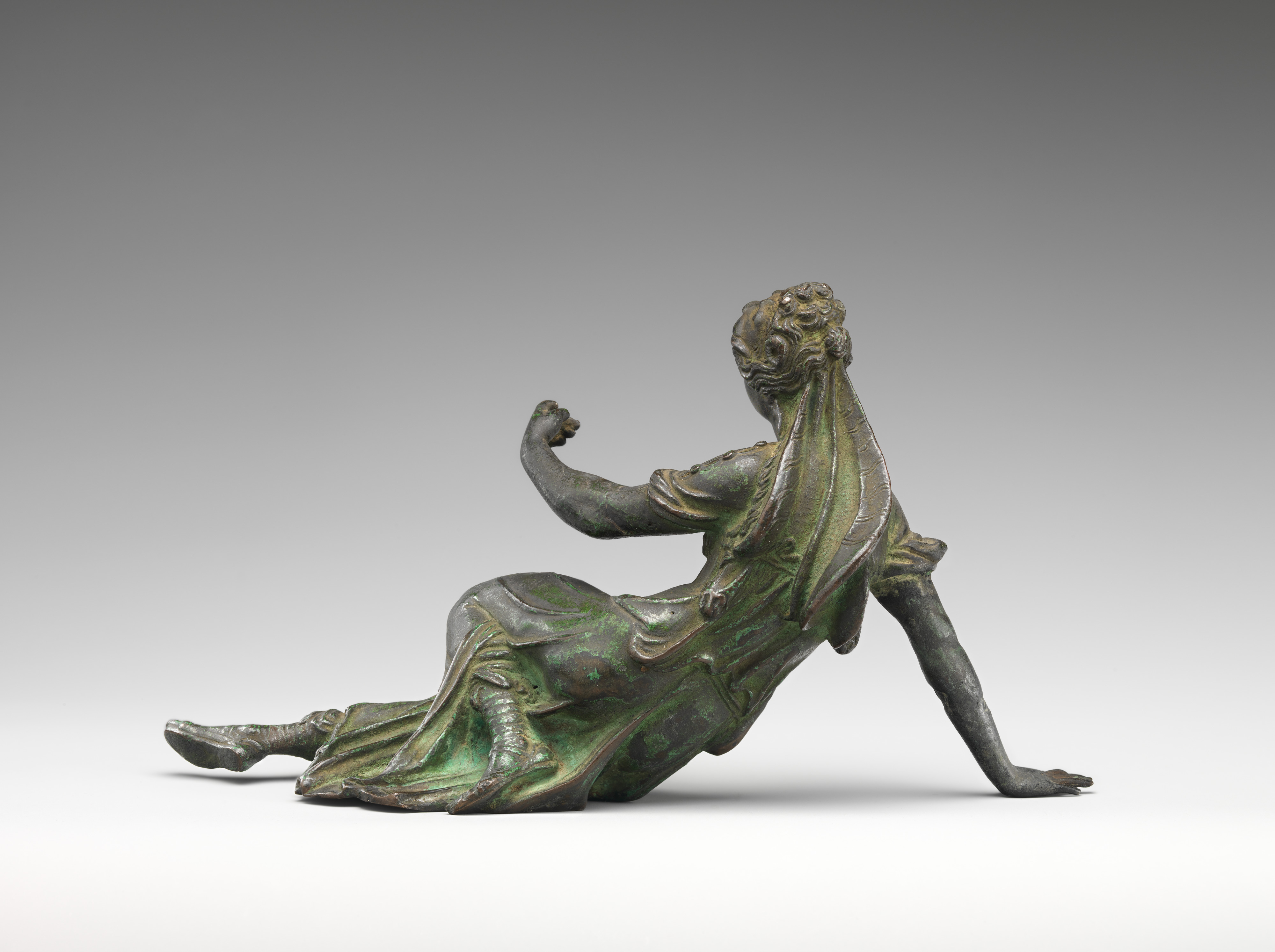Reclining female figure
Manner of Guglielmo della Porta Italian
Not on view
While thoroughly, recognizably Mannerist, the figure retains a contradictory “archaeological” patina, an artificial chloride corrosion that was applied at a later date. Richard Stone’s examination of the interior revealed an unusual method: extremely thin walls in the body and head, and core pin holes plugged with pointed lengths of wire. The arms are solid “and when apparently still in the wax were inserted into the short cap sleeves like stoppers in a bottle.”[1] Presciently, Stone likened the procedure to that of sculptors working in silver.
The statuette was formerly ascribed to an artist from the circle of the Rome-based Guglielmo della Porta and identified as Omphale, the ancient Lydian queen who owned Hercules as a slave. She usually appears brawnier than here, where her dainty hand hardly looks powerful enough to grasp the hero’s club, which she exchanged for her distaff. In fact, the model originated with a silversmith north of the Alps, probably from Augsburg. The same woman, clad in an elegant, clinging shift, occurs on top of an ebony and silver shrine from the Gonzaga collections, now in the Kunsthistorisches Museum.[2] Two other bronzes, of more rudimentary facture, are in the V&A, one occurring alongside an inkwell (that figure’s right arm is encircled by a snake and so is sometimes identified as Cleopatra).[3] Another, in the Alexander Fleischner collection, was attributed to Guglielmo della Porta when sold in 1929,[4] whence probably the attribution of our example. In all of these, the object once in the woman’s left hand is missing, making her status difficult if not impossible to establish.
-JDD
Footnotes
(For key to shortened references see bibliography in Allen, Italian Renaissance and Baroque Bronzes in The Metropolitan Museum of Art. NY: The Metropolitan Museum of Art, 2022.)
1. R. Stone/TR, November 12, 2010.
2. Venturelli 2005, pp. 190–91.
3. V&A, A.38-1939, called French. The same museum calls another example, A.90.1956, Venetian with a question mark. The first is unpublished; for the second, see Weihrauch 1967, p. 386, fig. 467.
4. Dorotheum, Vienna, May 13–15, 1929, lot 33.
Due to rights restrictions, this image cannot be enlarged, viewed at full screen, or downloaded.
This artwork is meant to be viewed from right to left. Scroll left to view more.



